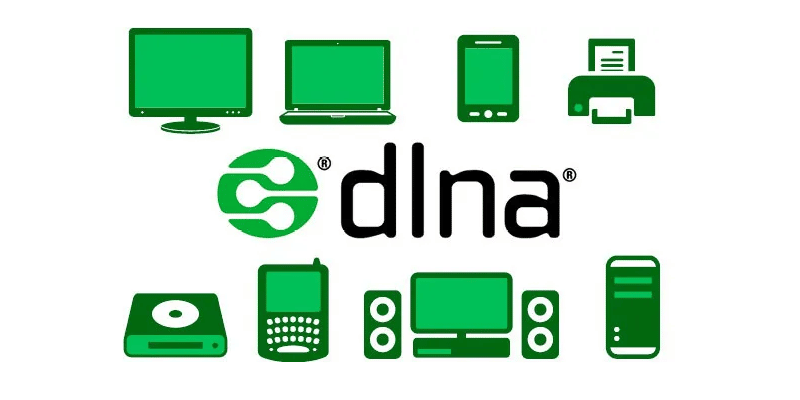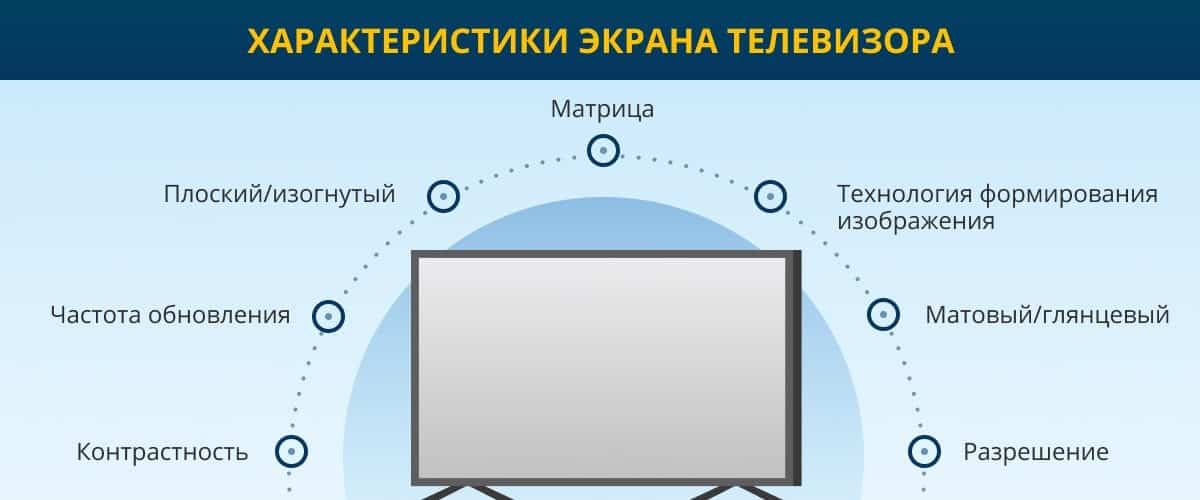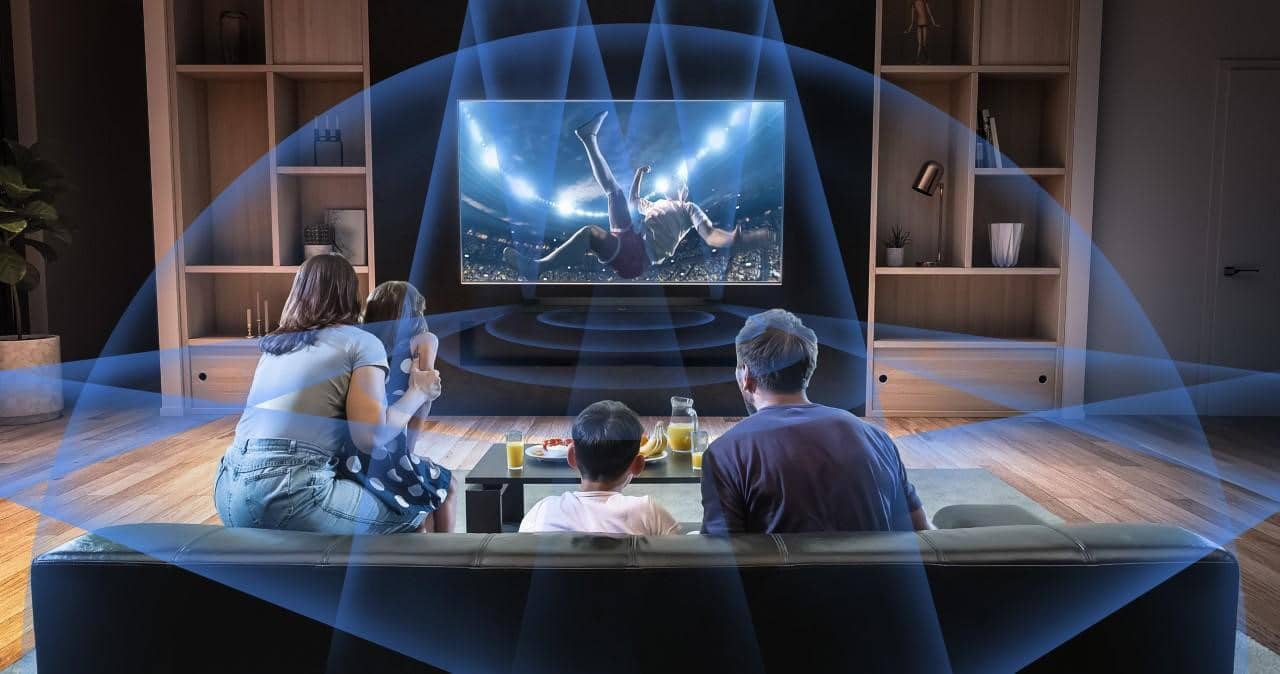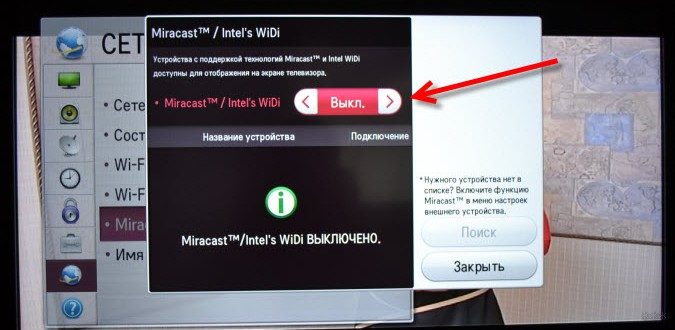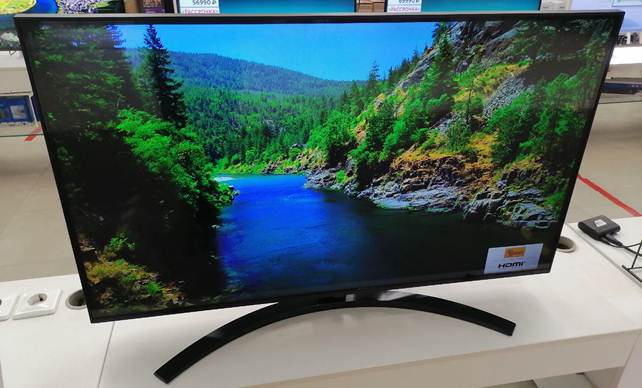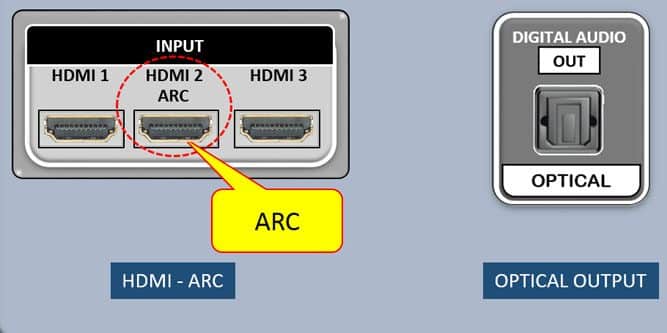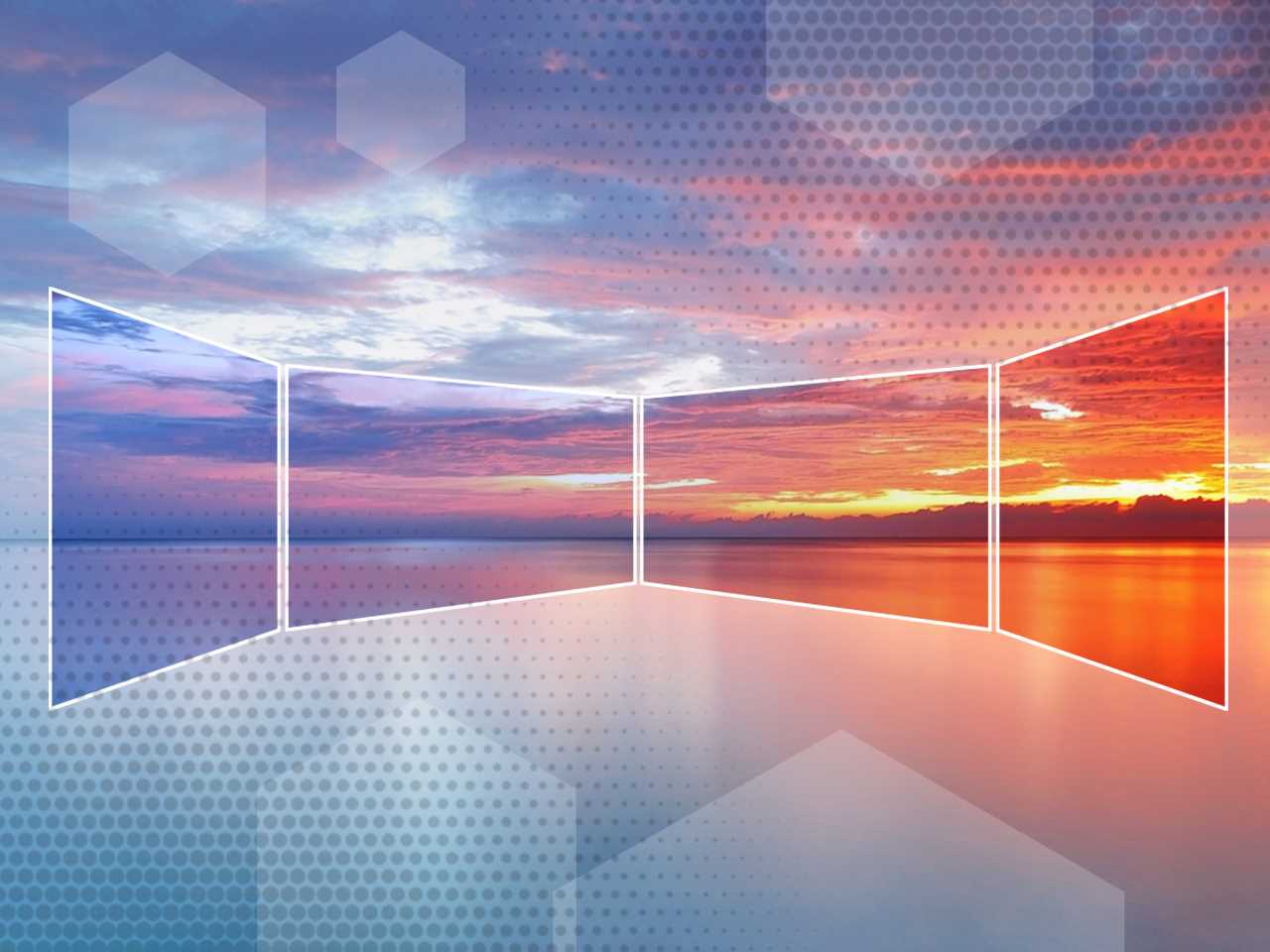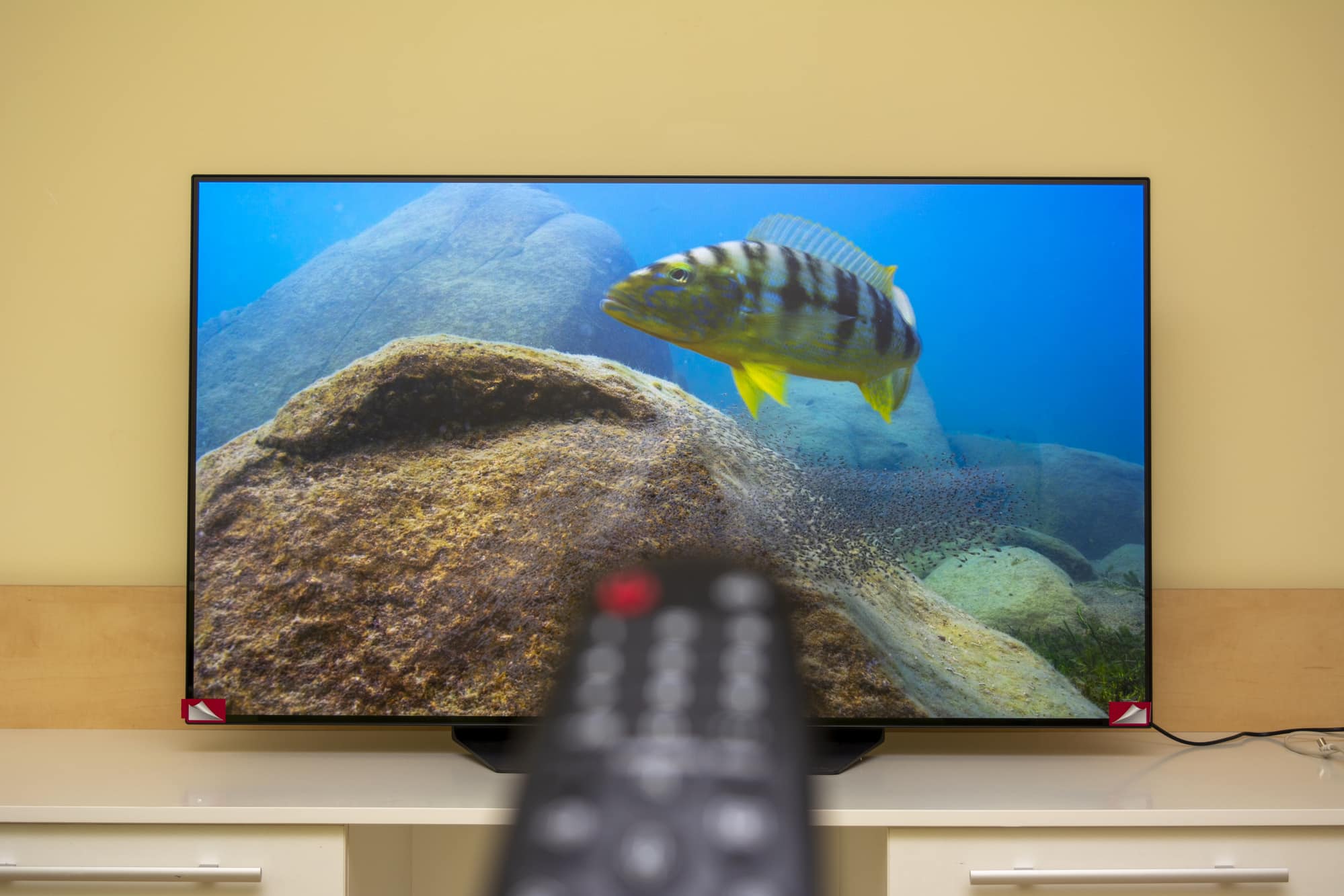The popular technology Digital Living Network Alliance will allow you to comfortably transfer any media content to devices of various groups and brands. How DLNA works, what devices are supported and how it is configured, read further in the review.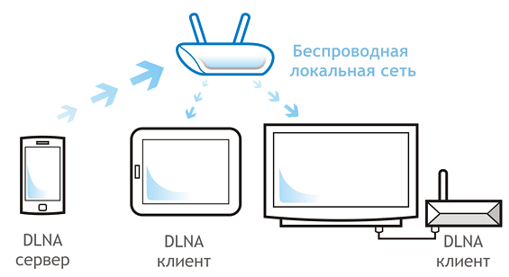 DLNA client and server in the same wireless LAN [/ caption]
DLNA client and server in the same wireless LAN [/ caption]
- What is DLNA
- DLNA Devices and Support
- How DLNA Technology Works
- DLNA function on TV
- Setting DLNA Function on LG TVs
- DLNA setup on SAMSUNG TV
- Setting up DLNA data transmission to Philips
- DLNA setup on Sony branded TVs
- How to set up DLNA on Xiaomi TVs
- DLNA connection on Windows 10
- Working with OS Linux
- Setting in MAC OS
- Connection errors and solutions
What is DLNA
DLNA is a joint venture between Intel, Microsoft and Sony. It is a set of standards that will allow compatible devices to transmit and receive any media files (photo, audio, video) over a wired or wireless Internet network, as well as play them online. In other words, it is a technology for connecting TVs, computers, digital cameras, printers, smartphones and other consumer electronics into a single network. Using DLNA, we send photos and videos taken to a mobile phone to the TV screen without unnecessary wires. We send photos from a digital camera directly to the printer. Thanks to the same option, we listen to our favorite music from the tablet through the computer speakers, etc.
Note! With the Digital Living Network Alliance technology, all media content is streamed, and there is no need to wait until the files are fully downloaded to play them.
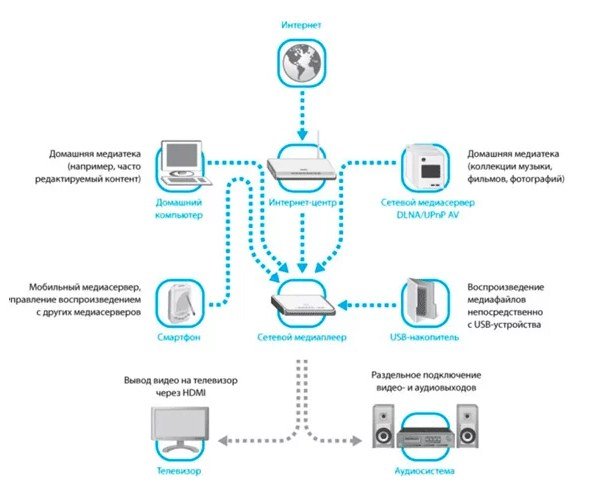 DLNA – technology for combining various devices into a single network [/ caption]
DLNA – technology for combining various devices into a single network [/ caption]
DLNA Devices and Support
All devices that comply with DLNA standards are conventionally divided into 3 groups:
- The first group includes all household network devices . These include TVs, video players, audio systems, stereos, printers, network storage, etc. By their functionality, devices are divided into media players (DMP), media servers (DMS), media players (DMP), media controllers (DMC) and media renderers (DMR).
- The second group is mobile devices : phones, portable players, cameras and camcorders, pocket computers, etc. Mobile devices are divided into the following classes in terms of functionality: mobile media players, media servers, downloaders, transmitters and controllers.
- The third group unites all household multifunctional devices . This includes devices that support additional communication standards and convert data formats.
All DLNA-certified devices carry the corresponding “DLNA Certified” logo. Today it is about 4.5 billion devices from more than 250 manufacturers. Modern personal computers and laptops, regardless of their operating system, are also DLNA-compatible. But, working with them to exchange data via the protocol, you first need to install the profile software that is loaded from the network.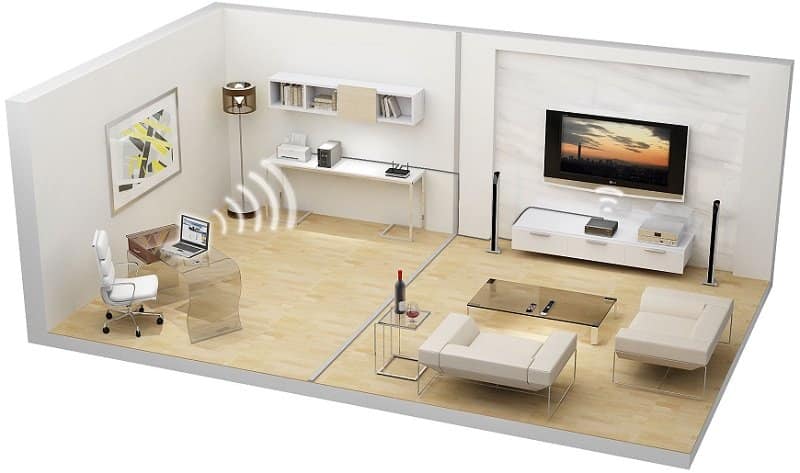 Devices supporting DLNA technology can be divided into three large groups [/ caption]
Devices supporting DLNA technology can be divided into three large groups [/ caption]
Important! For a successful exchange of media files, both devices must support the DLNA protocol.
How DLNA Technology Works
Two compatible devices are involved in the exchange of content using the DLNA protocol: a server and a DLNA client or player. A server is a device that stores and transfers any media content to the second. To automatically transfer data to DLNA devices, the server is set up to share media files for devices in the homegroup. A client or player is a device that receives and plays the received files. Most often, TVs, audio and video players act as the client. Some devices are combined into a single network automatically. To work with others, you will need a simple initial setup, which we will discuss below. A prerequisite for the DLNA protocol is the connection of all devices to the Internet. File exchange will be carried out exactly on it.
Important! To transfer data, all devices must be connected to a single home network. Otherwise, you will not be able to use the DLNA option.
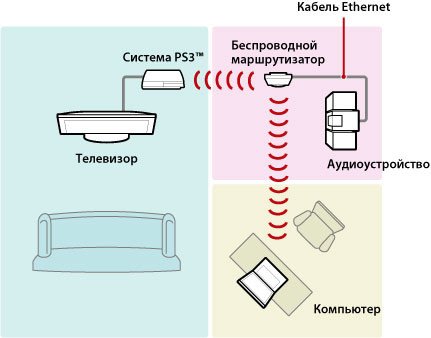 Client and server in the same network [/ caption]
Client and server in the same network [/ caption]
DLNA function on TV
DLNA is built into most modern TVs. To find out if it is supported on your device, refer to the user manual, or find the information you need on the official DLNA website. To transfer data via DLNA, the TV must be connected to the router:
- over a Wi-Fi network;
- or using an internet cable.
Note! When transferring heavy files to the TV, a wired (Ethernet) connection is recommended. This will avoid loss of streaming data and system crashes.
For a wired connection of the TV to the router, you will need an Internet cable. One end of the wire connects to the TV’s LAN jack, the other to the same connector on the router. Wireless TV connection will help you to install a built-in or external Wi-Fi adapter. The latter is purchased additionally, and is inserted into the USB connector. The router to which the devices are connected must support the DLNA protocol. Once a DLNA connection has been established, the TV screen will display playable folders.
Note! For the convenience of displaying and playing media files on TV, it is recommended to pre-sort all data into folders (for example, by category or artist). You can also use the LCN (Logical Channel Number) function on your TV, which sorts the channels in a convenient order.
Installing and configuring DLNA media server: https://youtu.be/KNbaRai5cAU
Setting DLNA Function on LG TVs
Additional DLNA option settings on TVs from different manufacturers are somewhat different, consider
this process on LG SMART TVs :
- On the media server from the official website, download and run the ” Smart Share ” software , which was developed specifically for LG on the webOS platform.

- We install the program according to the proposed instructions.
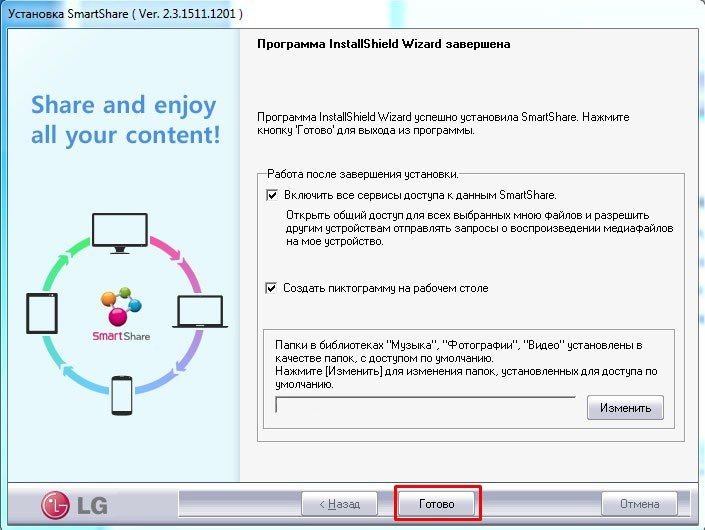
- To complete the launch, click on the “Finish” button, and on any of the icons that appear.
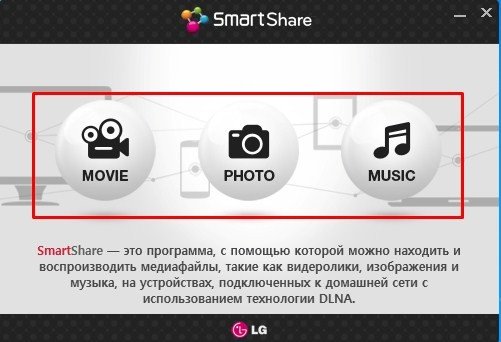
- Go to “Options” in the “Service” tab, and turn on the shared access to allowed files.

- We go down to “My shared files”, mark the folders for access to TV.
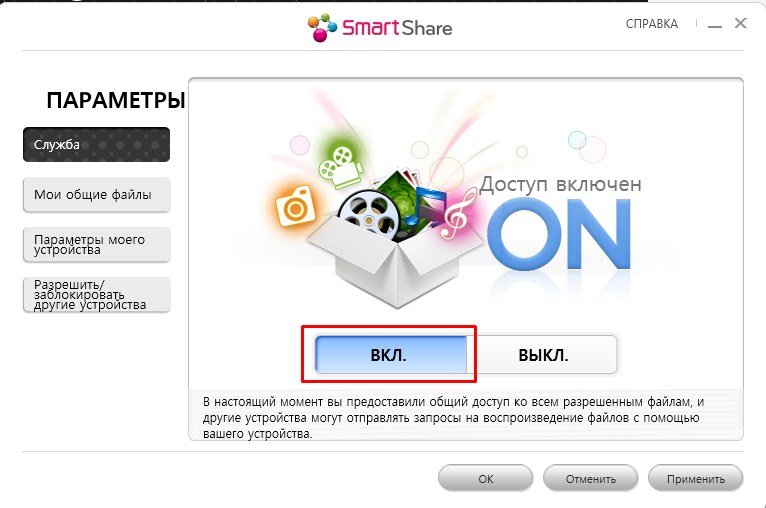
- Next, the media content available for playback will open.
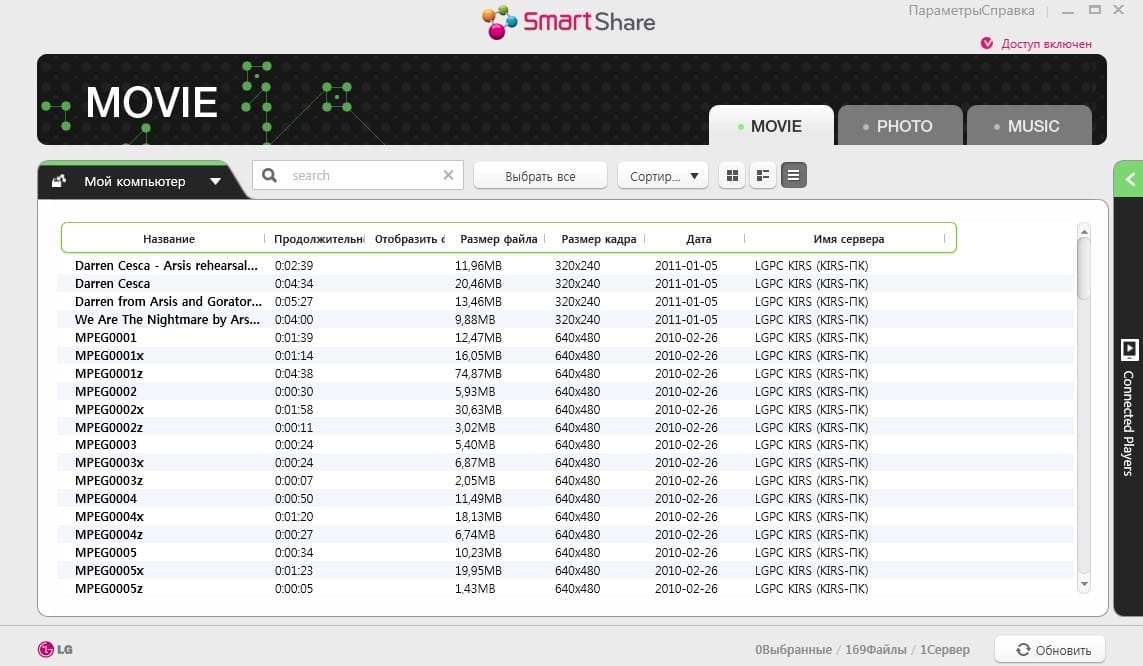
For further playback of files on LG, you need to open the TV menu, go to the “Smart Share” folder, and select the desired files from the list.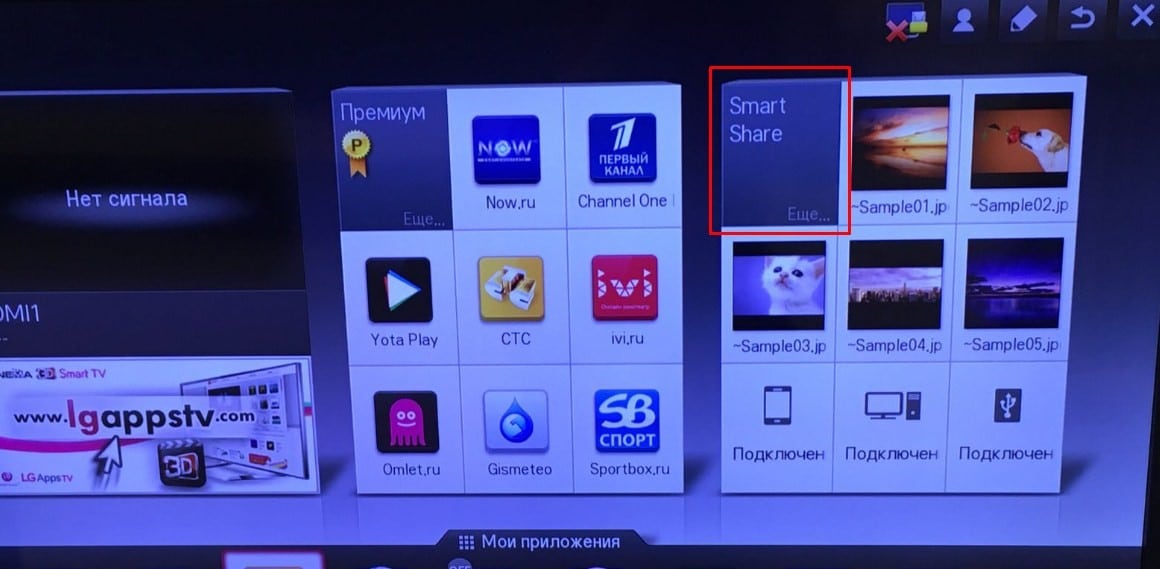 LG branded DLNA media server: installation and configuration – https://youtu.be/pWvj6QUQCmo
LG branded DLNA media server: installation and configuration – https://youtu.be/pWvj6QUQCmo
DLNA setup on SAMSUNG TV
Many SAMSUNG smart TVs are equipped with not only DLNA option, but also Plug and Play standard. UPnP also enables device sharing on a single network, but shows less flexibility in the choice of content providers. In most cases, UPnP and DLNA devices are compatible. AllShare and PC Share Manager programs have been developed for Samsung based on Tizen. The proprietary PC Share Manager software unites a TV and a computer or laptop into a single network, and also makes it possible to play multimedia data from a media server on TV. The program is compatible with all generations of Samsung TVs with DLNA support. We configure the PC Share Manager using the following algorithm:
- Download and run the software on your computer from the official Samsung website.
- In the explorer, which is located on the left, we find the necessary folders with media files.
- We mark them.
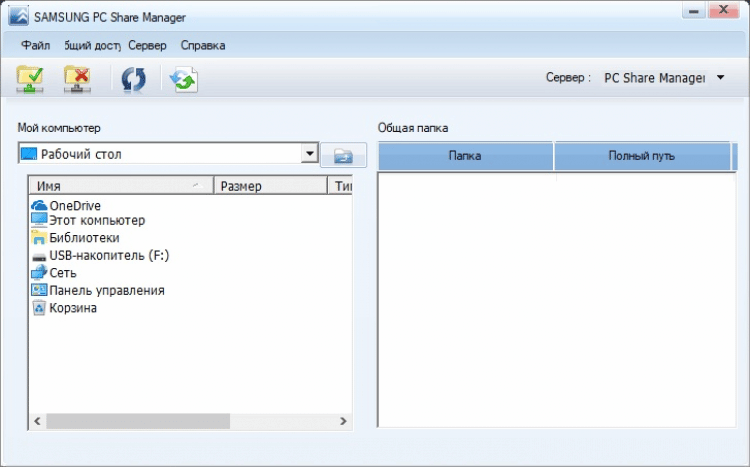
- Click on the folder with the checkmark located above.
- Open shared access to folders: drag them to the right field; or click on them with the right mouse button, and select the appropriate item in the context menu.
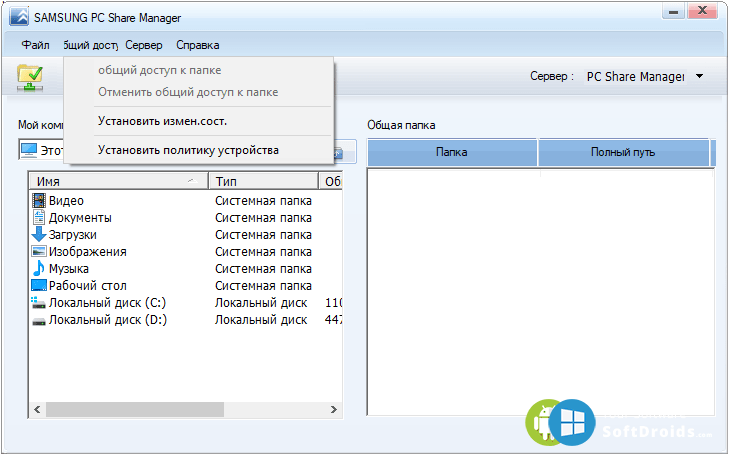
- Next, go to “setting device policy”, and in a new window select the desired device, that is, Samsung TV. We click on “Accept” and “OK”.
- We update the connection state: open “Sharing”, and click on “Set state changes”.
- We are waiting for the end of the updates.
After completing the configuration on the computer, we proceed to work with the TV:
- Open the settings and go to TV sources.
- Choose PC Share Manager and Share Folder.
- After the performed manipulations, the folders with media files that are on the PC and are available for playback on the TV will be displayed.
Note! Only the files categorized as Photo, Music, and Movie will be displayed on the Samsung TV. Media content that belongs to other categories will not be visible.
Setting up through AllShare looks like this:
- Download the “AllShare” program to your computer from the official website and launch it.
- Following the wizard’s prompts, click on the “Next” button.
- In the window that appears, select a device for connection – a Samsung TV.
- We complete the process.
- Go to the folder settings, and specify the general, where the files for playback will be located.
- We also set a folder for saving content from other devices.
- The next step is to set up rights and allow access to TV.
When working with DLNA, it is recommended to watch videos with the DivX codec. With this format, the size of the media content is significantly reduced without loss of quality.
DivX codec in Samsung with smart option is registered as follows:
- In the TV menu we find the “System” section.
- Next, open the DivX Video On Demand subsection.
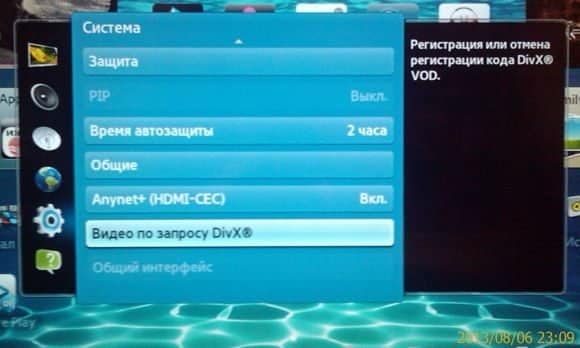
- Go to the official DivX website and register the device. Here you will need to enter the code found in the DivX VOD folder.
- Next, we go to work on a PC, and from the official DivX website download and run the DivX Player.
- Here we register the device and complete the process.
Setting up DLNA data transmission to Philips
One of the components of the Smart TV platform in Philips models is the SimplyShare option (https://apkfab.com/philips-simplyshare/com.philips.simplyshare). It integrates the TV with other DLNA devices. And allows you to play audio files from iPhone and iPod. Philips TVs from 6000 series and above can play other content. These models are equipped with SongBird technology, and codecs for format recognition. https://youtu.be/63l4usu6elk Another way to set up DLNA is to use the universal Home Media Server program:
- Download and run the aforementioned software on the server device from the official website.
- Next, we proceed to setting up access to content on a PC. Expand the “Media Resources” tab, and put a checkmark in front of the required drives: local, network or removable. Using the “Add” button, you can provide access not to the entire disk, but only to its individual elements. Finish the process with the “OK” button.
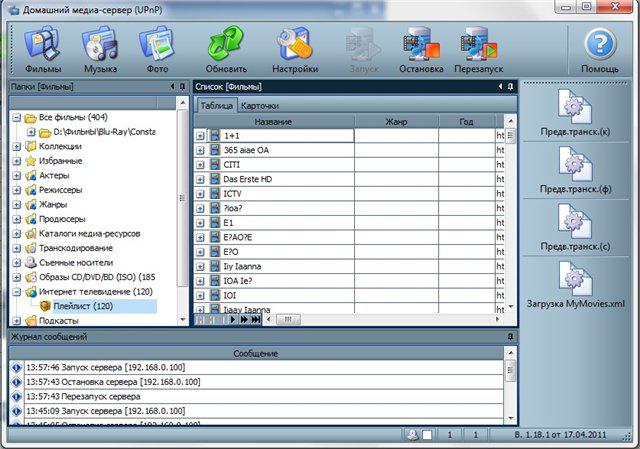
- Using the corresponding button, we start the data transfer to the TV.
- In the “Playback Devices” tab, select Philips. In this case, the TV must already be turned on and connected to the Internet.
- Go to the TV and press the Sources button on the remote control.
- In the “Sources” window, select the media network.
- We find the PC, expand the folder with the files available for playback, and play the content.
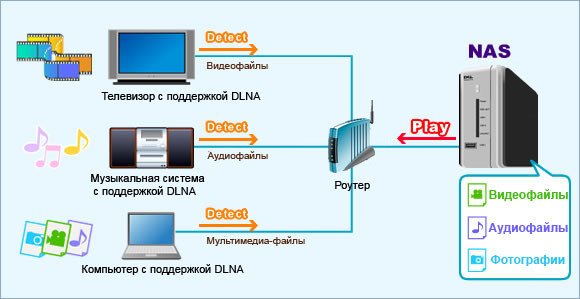
DLNA setup on Sony branded TVs
You can set up DLNA technology on Sony Bravia branded TVs in different ways. Let’s consider the most convenient option using the built-in Windows Media Player. This method is suitable for PCs based on OS Windows 8.1 and higher:
- Expand the “Start” menu, then in the general list of all programs we find and select the desired player.
- We pass to the “Library”, which consists of 3 sections – audio, pictures and films.
- Depending on the type of material that needs to be reproduced on the TV screen, go to the section “Managing the Music Library”, “Managing the Gallery” or “Managing the Video Library”, respectively.
- Here, from the existing list, select the folder for broadcasting. If there is none here, add it manually via the “Add” button.
- Next, go to the “Stream” section, and click on the streaming connection in the home group.
- In the window that opens, from the proposed list of available devices, select the Sony Bravia TV, and click “Next”.
- In the next step, we set up access to various files and folders.
- After clicking on the “Next” button, the computer will generate a password that may be required to connect other devices to the DLNA network.
Let’s go to work with the TV:
- Expand the main menu.
- Find the “Multimedia Server” here and deploy it.
- Select a server device from the offered list. In this case, the PC.
- Next, the screen will display all available media files – select the one you want.
To transfer data from a smartphone, we perform the following actions:
- We turn on both devices.
- Activate Wi-Fi Direct on the TV through the advanced settings.
- In the “Show Network (SSID / Password)” section, we find and remember the password.
- After that, we activate the Wi-Fi Direct function on the phone.
- Select the desired TV from the proposed list of available devices and enter the previously specified password.
- Next, we transfer data using the Throw command.
When connecting an Apple-branded phone, you need an Apple TV. https://youtu.be/7HU14zNCWbQ
How to set up DLNA on Xiaomi TVs
To work with Xiaomi as a DLNA client, the same universal Windows Media Player is suitable. The “BubbleUPNP” application (https://play.google.com/store/apps/details?id=com.bubblesoft.android.bubbleupnp&hl=ru&gl=US) on a PC server, or the “VLC for Android »To send files from an Android smartphone or tablet. Both utilities are loaded from the network.
DLNA connection on Windows 10
In Windows 10, you can display any video on a player device in a few clicks:
- Go to the folder with the video file.
- Open its context menu.
- Hover the cursor over the “Transfer to device” column.
- And click on the desired client.
The file was sent using DLNA technology for playback. Dlna server in Windows 10 for streaming video: https://youtu.be/evd0Nqc9joc
Working with OS Linux
Recommended program for OS Linux – miniDLNA:
- Download and run the program.
- Expand the configuration file /etc/minidlna.conf. The configurations are standard, we only indicate the path to all files and the device for connection.
After the performed manipulations, open the TV menu, and find folders with media content from Linux.
Setting in MAC OS
To work with MAC OS using DLNA technology, you will need to install third-party software. Best utilities:
- Elmedia Player Pro (https://www.appstorrent.ru/114-elmedia-video-player.html);
- Serviio Pro (https://macx.ws/mac-os-unix/9624-serviio.html);
- FireStream (https://apps.apple.com/us/app/firestream/id1005325119?mt=12).
Each of the programs has its own characteristic features. Therefore, the approach to choosing the most suitable utility is individual and depends on the purpose of the connection.
Connection errors and solutions
Some users, when connecting devices using DLNA technology, face a number of problems and errors. The most common problem is that devices can’t see each other or won’t start. In this case, most likely the answer lies in the Internet connection. It is necessary to re-verify that all devices are in the same local network. In the case of working with a smartphone, it is recommended to disconnect a possible connection to the mobile Internet in advance.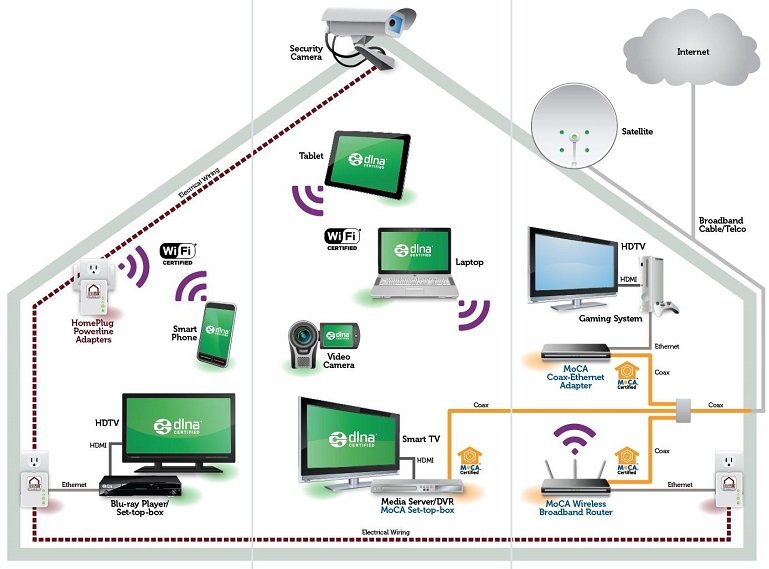 The error may be in an insufficiently high-quality Internet connection [/ caption] Poor playback or knocking out of the program – may be a consequence of the low speed of the switch ports. You can try to solve the problem through the appropriate settings. As you can see, DLNA technology is universal and quite convenient. To connect, it remains only to choose the most suitable connection method, according to your goals and technical characteristics of the devices.
The error may be in an insufficiently high-quality Internet connection [/ caption] Poor playback or knocking out of the program – may be a consequence of the low speed of the switch ports. You can try to solve the problem through the appropriate settings. As you can see, DLNA technology is universal and quite convenient. To connect, it remains only to choose the most suitable connection method, according to your goals and technical characteristics of the devices.
